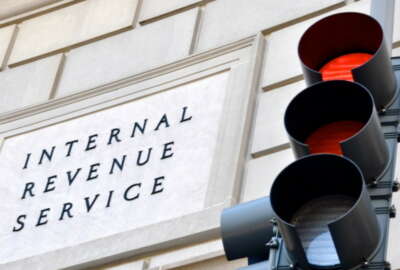
Pay raise? Probably. Retiree COLA? Maybe not
When investing for retirement having more time is good, but Senior Correspondent Mike Causey says that young and lower-paid federal investors may be missing a...
Federal workers are in line to get a pay raise in January 2017. Probably about the same amount, 1.6 percent, slightly more than the 1.3 percent they received this year.
Federal retirees are looking at a cost-of-living adjustment of zero next year. That would be the same amount (as in nothing) they got last January.
So what gives?
It’s as simple as the law, and the price of oil. Also a lot more complicated than that.
Under FEPCA, the 1990 pay law (approved by a Democratic Congress and signed by a Republican president) non-postal federal workers were and were supposed to get raises each January. The idea was to gradually close the pay gap — of around 23 percent at the time — that lawmakers (at the time) agreed existed between federal pay and private sector salaries for similar jobs. The pay gap argument has been going on ever since. Pro-fed groups and federal unions say it is wider than ever, about 35 percent. The opposition says that Uncle Sam is the salary king, especially when considering the value of federal benefits — retirement, health insurance, 401k plan, holidays and sick leave.
President Bill Clinton inherited the pay catchup law. But he recommended a zero raise that year. Congress gave feds a raise, but not the catchup amount envisioned in the law. It’s been that way ever since. Presidents Clinton, and Bush OK’d smaller raises than those called for by the FEPCA formula. President Barack Obama proposed a two-year pay freeze, which Congress extended to three years. He recommended a 1.6 percent adjustment for 2017. Democratic members of Congress say feds deserve much more. Sen. Ben Cardin (D-Md.) is leading the charge for a 5.3 percent hike. Because this is an election year, many members of Congress are counting the number of federal voters in their districts and states. But the odds of feds getting the higher amount are slim.
Federal retirees are a different story. They don’t get pay raises subject to fiscal and political considerations. By law, the retirees — including folks under Social Security and those drawing retired military pay — get cost of living adjustments. When inflation, as measured by the Bureau of Labor Statistics, goes up they get a COLA. When it doesn’t, they don’t. Many times in the past retirees got bigger COLA percentages than active duty feds got in pay raises. Everybody got used to prices — as measured by the Consumer Price Index — going up. But with the dramatic drop in oil prices we’ve had long periods of either very little inflation, or actual deflation.
Many retirees think the market basket of goods the government uses to determine inflation doesn’t give enough weight to things that older people — retirees — need to buy. Typical of what many retirees are saying is this email from retiree Bob Iancione, who said, “I read once again where Sen. Ben Cardin wants to give the current federal employee’s a 5.3 percent pay increase. I also see it has 32 cosponsors in the House . Mike, I am not writing you to beat a dead horse or deny the current feds anything, remember I was one also. But it’s truly amazing to me that there isn’t anybody worried about the retirees or the Social Security recipients not getting a dime. What truly gives here, Mike, please enlighten me. I can’t be the only person on this bandwagon. Please, Mike, it would be nice to see you write something or try and gather some support for this cause.”
While the local news is focused on the pay raise for federal employees, not much is being reported on the House and Senate bills aimed at providing an emergency payment to retirees. H.R. 4012 and S. 2251 direct the Treasury Department to disburse a payment of $581 to certain individuals — Social Security recipients and those receiving disability benefits, railroad retirement benefits and veterans’ benefits. For retired federal and state workers (those who do not collect Social Security), the bills would provide a federal tax credit of the same amount. However, much like a 5.3 percent pay raise, these bills are unlikely to see any movement in Congress.
Nearly Useless Factoid
Worcester, Massachusetts resident Joshua C. Stoddard patented the calliope on Oct. 9, 1855.
Source: Wikipedia
Copyright © 2025 Federal News Network. All rights reserved. This website is not intended for users located within the European Economic Area.
Mike Causey is senior correspondent for Federal News Network and writes his daily Federal Report column on federal employees’ pay, benefits and retirement.
Follow @mcauseyWFED





